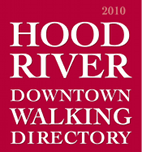Great presentation Thursday, June 17, at the Heights Business Association meeting on the topic of urban renewal districts, and how one might work if the city were to adopt one for the Heights.
City Manager Bob Francis opened the presentation. Elaine Howard, a consulting partner with Tashman Johnson LLC, the city’s urban renewal consultants, expanded the topic.
An urban renewal district creates a way to share tax revenues for infrastructure improvements — things like sidewalks, streets, lights. It does that by freezing the amount of tax revenues from the urban renewal area to the amount generated at the time the district is created.
People say the “tax base is frozen.” Actually, the tax base continues to increase in value as improvements occur and, theoretically, investors put money into new projects in urban renewal area. But the tax revenue from that “incremental” increase in value is diverted to pay back bonds sold to fund improvements.
So the simple fact is, an urban renewal district does not increase taxing authority beyond what voters have already approved. But because it diverts money from taxing districts, it requires those districts to approve creation of the urban renewal area.
“There may be opposition from our other taxing districts, because everybody is hurting for revenues,” Francis acknowledged.
Francis noted that as a result of the urban renewal district covering downtown since 1986, taxing districts have forgone about $547,000 in revenue per year. The new streets, underground utility improvements, new light poles, sidewalks and tree wells are the result of that. The district was scheduled to end in 2011, but the District had another $7.1 million in projects — improvements to State Street between 9th and 13th — so the expiration of the district was extended another 10 years.
Francis noted that the Waterfront Urban Renewal District funded odor controls at the city’s waste treatment plant, which in turn helped the Port of Hood River construct the Halyard Building on Portway, and recruit ANPC as its sole tenant.
Howard said that before an urban renewal district is created, a feasibility study looks at the target area to determine its potential for increased investment (and assessed value). If a city creates a district and overall property value stays the same, no tax increment occurs — and no way to fund improvements.
If the city of Hood River decides to move ahead and create an urban renewal district, it would form an Urban Renewal Agency with seven members. Public hearings help define the plan, which must also pass scrutiny of the Planning Commission, to make sure it complies with the city’s comprehensive plan. Throughout the process, all affected property owners are notified that a district is being considered.
District plans must clearly specify how much money will be spent, and on what. A plan also must specify its duration. Typical plans run for 20 years. After an urban renewal district expires, all revenue — including the “increment,” from what officials hope is greatly higher assessed value — is apportioned to local taxing districts.

Recent Comments